The One-Light Portrait
January 22, 2013
We’ve all seen this familiar tableau in most studios, and it never fails to astonish non-photographers: a subject, center-frame, surrounded by a forest of lighting gear—main light, fill lights, background lights, hair lights and kickers—all sprouting up from booms and stands, along with arcane gadgets for modulating their output, softboxes, umbrellas, egg crates, gel frames, etc. “Geez,” a first-timer will hoot, “all these lights to shoot a couple of cheerleaders?”
The simple truth is that controlled lighting solves problems, and in many cases, a problem is reflexively solved by bringing in an additional lamp, maybe two, maybe with grids or barndoors. The rule all too often becomes “too much lighting is not enough.”
But there is a flip side to this reasoning: lighting scenarios in which, in fact, less is more. Some subjects lend themselves best to being sculpted with a single light source only. Many portraits fall into this category, and creating a beautifully lit, uncomplicated one-light portrait is one of photography’s really rewarding moments. The following images and accompanying diagrams demonstrate a handful of these simple setups—indoor and outdoor, using both artificial and natural light (the sun, of course, being the king of all single sources). All have been helped by accessories, the little “forest creatures,” mostly to adjust shadow and highlight values or modify color here and there, but in all cases without bringing in one extra amp’s worth of additional lighting.
The Elegant Alternative
Part of a portrait’s emotional power derives from where a subject is placed in space and time. Low-key lighting can conjure up a moment that’s somber or intense; something late at night perhaps, or in intimate surroundings. Open softlight signals a bit of joie de vivre, a free spirit. Effects like these come when a portrait setup suggests the nature of an unseen, out-of-frame light source. Diffused, overhead lighting with open shadows is the hallmark for what’s universally known in the instruction manuals as “hazy sun;” hard light from the same angle, with a bit of warming gel, can summon up the illusion of an exterior at high noon or an urban corner with a streetlight overhead; diffused light striking a subject from the side, with soft margins between highlight and shadow, is a visual cue for indirect window light, and so on. These are all illusory impressions, but they suggest a mood or a story about the portrait-sitter that reveals more than just what he or she looks like. And all can be controlled by the elegant alternative of a single-source light. The following images represent a small portfolio of samples.
Softlight by Diffusion: The Box
.jpg)
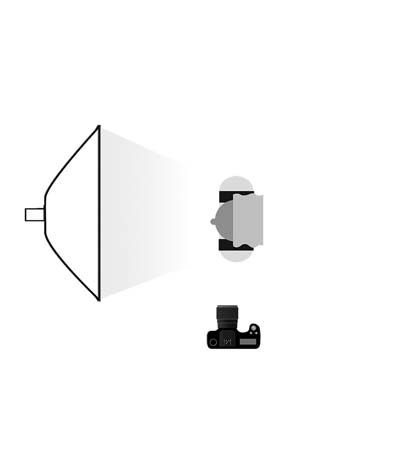
Today, the marquee tool for flattering, diffused illumination is the softbox—in this case, a medium, 3 x 4-foot unit from the Chimera line. The box was mounted on single Norman electronic flash lamphead, adjusted to a low- power setting and positioned close to the subject to achieve maximum softness. Cross lighting like this is completely practical with a child whose skin is this flawless—so no worries about emphasizing unwanted lines or textures. More importantly, the dramatic sidelighting is sober in mood and supports this little girl’s enigmatic, slightly adult personality.
Softlight Bounced
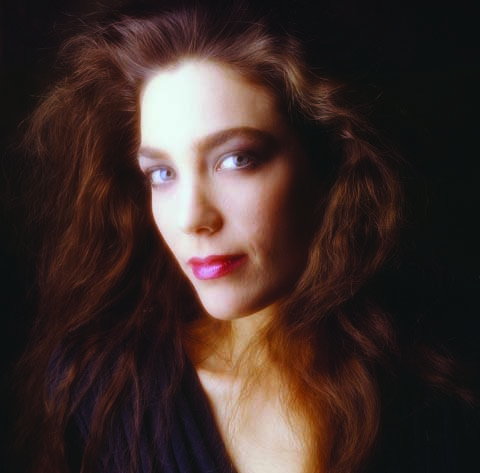
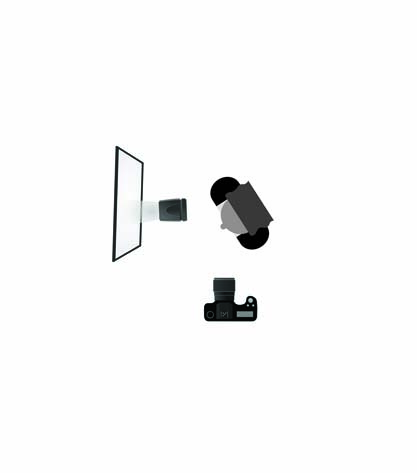
Here’s another sidelight, this time from a single 2000-watt second Norman flash head, “bounced” off a 4 x 8-foot sheet of Foamcore board. Bounce lighting achieves maximum softness, suggesting light from a large window. In this case, the light scatter that usually results from using large reflective surfaces was controlled by positioning a 3 x 4-foot black fabric “flag” camera right. This absorbs any light that might overcome the important shadow defining this young woman’s classic features.
Controlled Bounce: The Umbrella
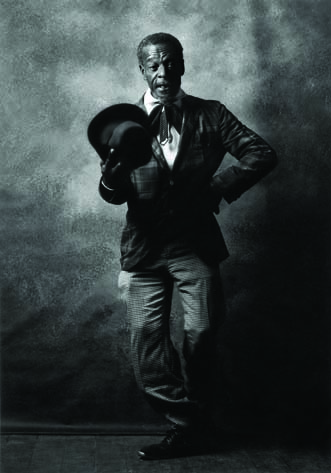
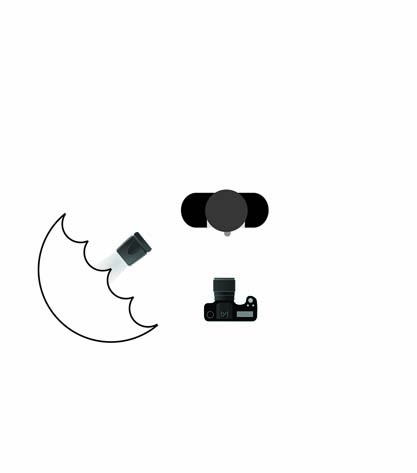
Another bounce-light option, the trusty umbrella reflector, is single-source lighting’s oldest friend. Eminently portable and, in this sample, paired with a battery-powered Lumedyne electronic flash, it was the perfect location tool for lighting a street dancer at an improvised studio in New Orleans’ French Quarter. Umbrellas come in a score of sizes and configurations. This one was relatively small (24 inches across), and a perfect tool for controlling the bounce-light effect—concentrating sidelight on the subject, and spilling enough onto the canvas background to create a timeless portrait.
Mixing Strobe and Window Light
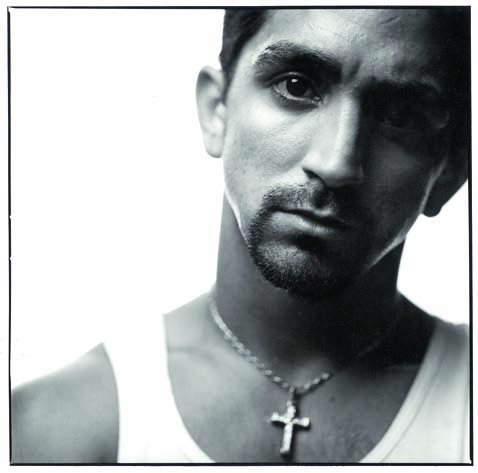
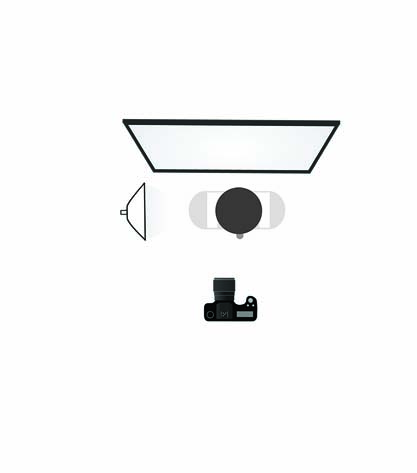
Even with the relatively narrow coverage of a single strobe head coupled with Chimera’s smallest softbox (the 10-inch-deep Mini-Silver, with 12 x 16-inch diffuser), this portrait still manages to feature a high-key white background. We achieve that by slightly over-exposing the ambient daylight through an open window behind the subject. A low-power setting on the flash unit, with the concomitant wide-lens aperture, helped blow out the background to a stark white, while also creating the shallow depth-of-field that lends drama to this slightly sinister image.
Strobe Al Fresco
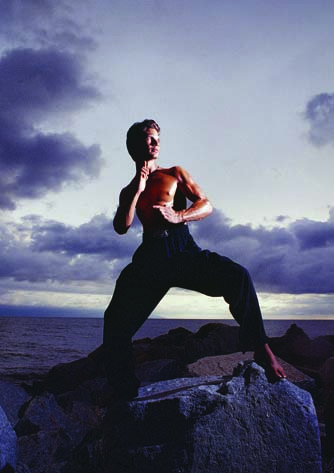

Outdoor vistas, especially at sunset or first light, (or whenever the subject can be isolated from available light such as beneath a dense shade tree, or under a rock outcrop) make for interesting one-light portrait opportunities. This martial- arts specialist was photographed on a Mexican beach near dusk. The light source: a battery- operated portable Norman strobe unit, with a small reflector, a bit of diffusion material—in this case, Roscolux Tough Spun and a layer of CTO warming gel—to create the illusion of sunset lighting from out of frame. The actual sunlight was already below the horizon.
Flying Birdbaths
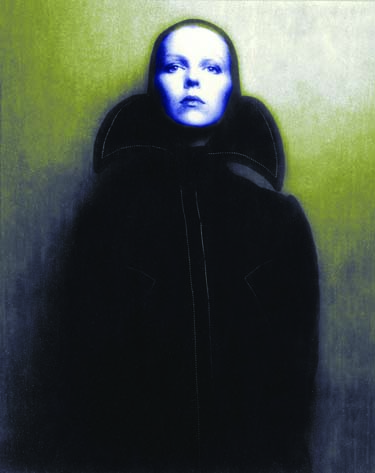

They’re called “beauty dishes,” but a common nickname is “bird bath,” an apt description of this popular, broad-faced, shallow reflector. They’re sold by most strobe manufacturers, and are must-haves for one-light portraiture, ranging in size from around 16 to 28 inches. They’re readily accessorized—with barn doors, honeycomb grids, diffusers—for producing well-controlled spreads of illumination, from high contrast to diffused (though never quite as diffused as softbox or bounce lighting). The images here illustrate two applications of the birdbath, both “flown” over the subjects with boom stands. The caped-woman image is an experimental use of an outdated high-contrast Polaroid film, once used for copying stats and line art. Color was added in post-production. The signature roughness and optical artifacts of some Polaroid emulsions are now easily reproducible with revival instant films from a firm called The Impossible Project or they can be created digitally, with dedicated filtration software from Nik.
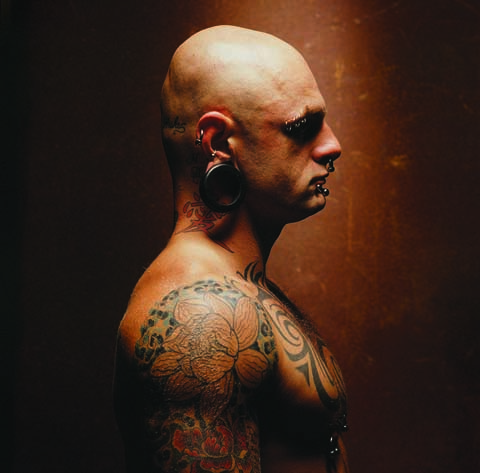
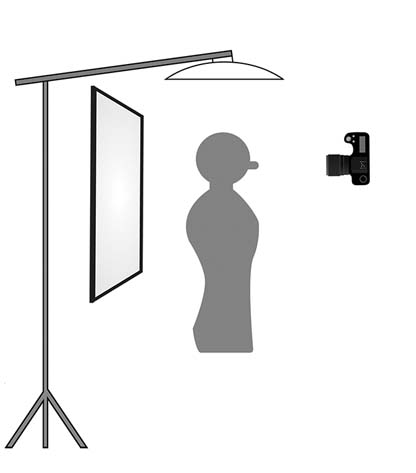
The beauty dish in this sample was boomed above the subject’s face at a steep downward angle and feathered to allow light spill on the seamless paper backdrop just a few inches behind her. An internally mounted “bounce plate,” a common beauty dish accessory, helped subdue the lamp’s hard throw. This step was necessary because the emulsion involved adds a great deal of contrast on its own. A similar configuration was used for the tattooed man, with an added step of elasticized “diffusion sock” fitted over the lamp’s face to help minimize the shine on this model’s head. The beauty dish was boomed directly over the subject, and the background—a sheet of rusted sheet metal—was positioned near enough to catch a bit of light spill from the dish’s rear edge.
Nature’s Softbox
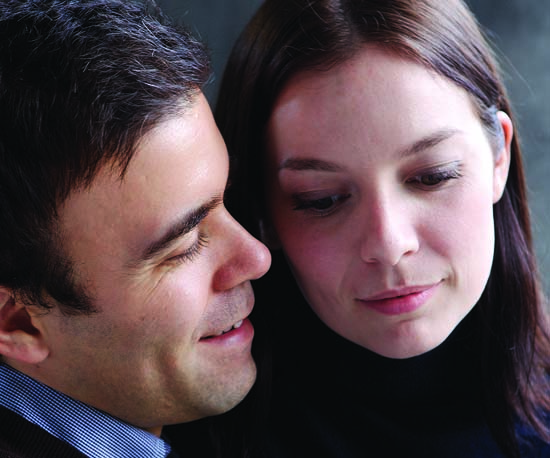
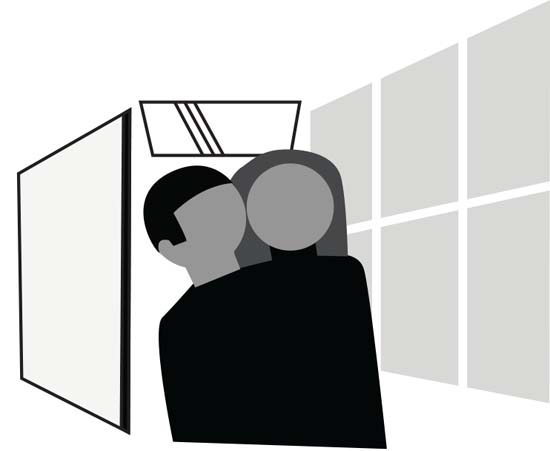
Window light is obviously our oldest breed of indoor photographic lighting. Here, a pair of north-facing French doors provide the soft, single-light source best suited to this style of casual, naturalistic portrait. The indirect, wrap-around quality of “nature’s softbox” is ideal for the two-shot of these newlyweds (above). A 52-inch, white collapsible reflector camera left, opens up the shadow on that side of the young man’s face, and a smaller silver fabric version in back kicks a small highlight into the woman’s hair. These accessories—along with the entire family of diffusers, flags and scrims from the same manufacturers—are useful for all studio work, and indispensable with daylighting. Another case in point is this closeup headshot of a young professional dancer (below). Here, the natural light was augmented by a 36-inch silver reflector beneath the dancer’s face and a larger silver fill mounted on a lightstand behind her to throw a highlight into her very dark hair.
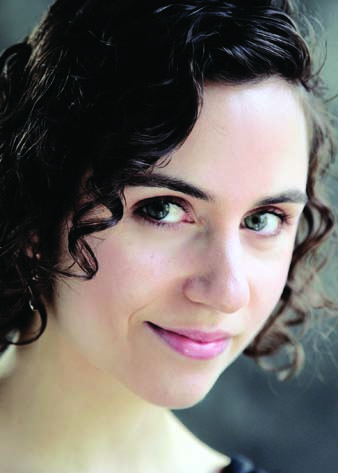
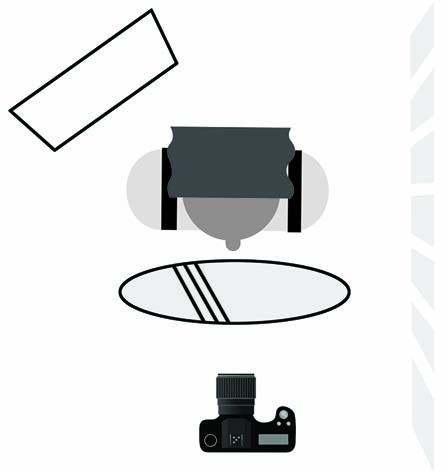
Enter the LED
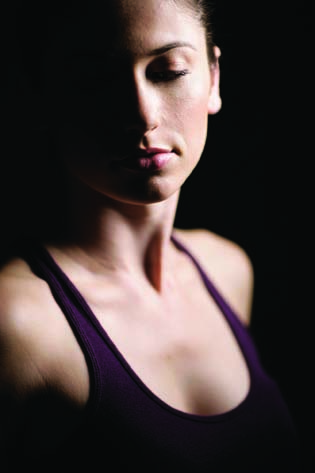

It’s no secret that the newest chatter in lighting is all about LEDs. They’re kind on power consumption and are daylight-color-balanced, and they operate by the principle of electroluminescence, thus, no heat production. It’s hard to imagine a more friendly breed of portrait lighting. Each unit is a tightly-packed grid-style array of tiny individual diodes that collectively create a soft, easily-controllable beam of light. This moody, sculptural portrait was made with a single 1 x 1-foot LED unit from the firm Litepanels. The soft output made this extreme split lighting fairly easy on the model’s complexion. Because the power of LEDs falls short of conventional photographic light sources, a small unit like this one needs to be placed very close to the subject, not really a problem given the almost non-existent heat production. LED units can also be ganged together to form large, single-source lamps with ever-increasing output and wraparound spread as you add more units. Lastly, a more playful portrait of the same model was made with another Litepanels unit, this one configured as a ring light. This flat, provocative mode of lighting suggests the spontaneous quality of fashion photography, where it’s a popular tool. It’s an interesting variation on the one-light portrait, but leaves few details to the imagination. Try it, but only with great restraint.
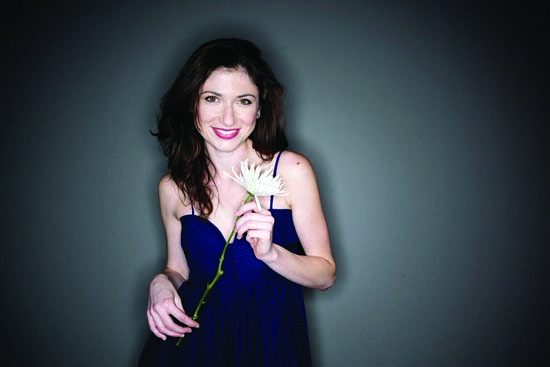

Other Shooters Weigh In
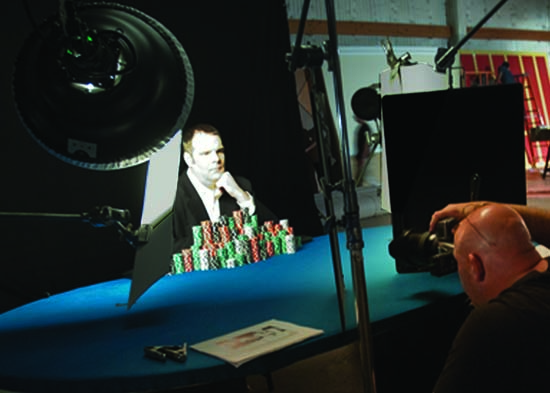
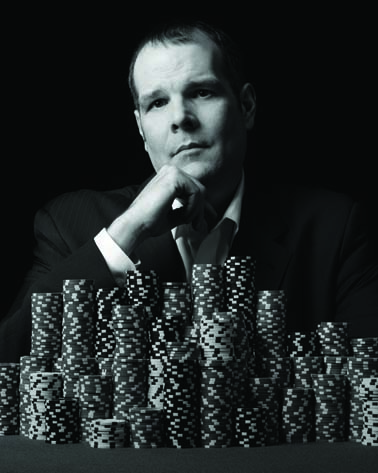
Above Photos by Joel Lipton
Many professional photographers prefer single-source lighting for a lot of their commercial work. Here, Los Angeles-based advertising shooter Joel Lipton (www.joellipton.com) uses a Profoto beauty dish/strobe combination in an elegantly uncluttered portrait setup for a casino client (left). Lipton’s work, both as a still photographer and filmmaker, is known worldwide.
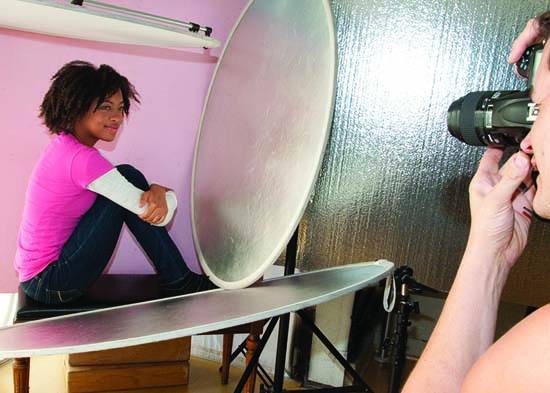
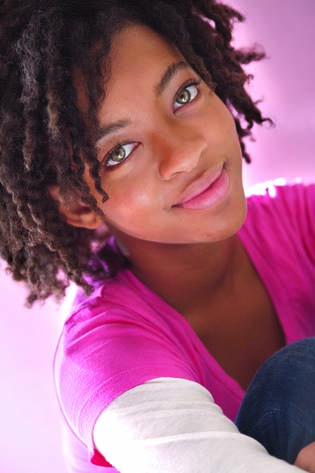
Above Photos by Bill Ballerini
A mother and son team, Kathy Cooley and Bill Ballerini (www.ballerinicooleystudios.com), have adapted one wall of their Playa Del Rey, California, studio as a versatile single-daylight source. Ballerini is shown below augmenting soft afternoon lighting using collapsible Flexfill reflectors. The result: a striking portrait of this junior-look model.
Writer and veteran commercial photographer Jim Cornfield (www.jimcornfield.net) is a regular contributor to Rangefinder. Over the years, he has authored two books and numerous feature articles devoted to lighting technique.




